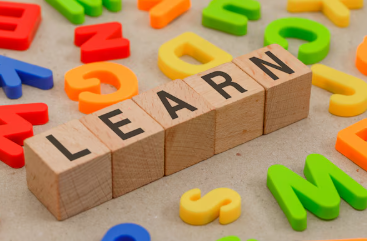Sequential Verbal Development for Roro – Read, Music, Visual Aids, Repetitive Practice, Simple Requests, Then Talk
Ordinarily, children learn to talk at an early stage by listening to and imitating others. For Roro, however, her brain struggled to process what she heard, preventing her from fully understanding or remembering conversations. In fact, reading became the first step for her to explore and connect with the world.
Read – Opening Her Eyes to See the World

It took us nearly a year to teach her the 26 letters and their phonetic sounds. We sang ABC songs and explored related visuals on YouTube. Despite being unable to speak, Roro had an impressive memory and could repeat the words from YouTube videos with remarkable accuracy. Once she learned to read, she began to notice her surroundings—recognizing street signs, McDonald’s, toy stores, and more.
Music – Bringing Melody into Her Life
I believe music is a fundamental beauty in our soul, and Roro loved to sing. She had a natural ability to sing beautifully. Her grandma found a collection of church children hymns, folk songs, Christmas carols, and pop music for her. Once Roro could read, she followed the lyrics on the music sheets and sang along. We practiced and enjoyed ourselves with the natural melodies in the park, and we also sang aloud in the car. Some songs, though, were beyond her understanding—especially the ones Popo favored—but she sang them anyway. These moments created profound memories for us.

Visual Aids – Enhancing Learning Through Technology
Building upon the skills Roro gained, we introduced visual aids to further support her learning. Current technologies have not only enhanced grandparents’ ability to teach special needs children but also allowed Roro to engage in visual learning at her own pace. Many educators, with their professional experience, create engaging action stories and music that capture children’s attention, such as ABC Mouse, Disney Channel, and more. With the use of visual tools—such as flashcards, picture communication boards, and others—Roro definitely benefited from these resources.
Repetitive Practice – Reinforcing Learning and Building Skills
Even for a typical person, repetition of a task or activity is essential to gradually improve proficiency. The same applied to Roro—she required purposeful repetition of tasks to reinforce learning and build skills. This approach not only strengthened her confidence but also made the learning process more effective over time. When she mastered one task, we would encourage her to take on more. We always treated her like any other child, but with more patience and support.
Simple Requests – The Beginning of Language Development
Children with special needs often face challenges in speaking clearly, and parents may sometimes feel uncomfortable talking to them in public to avoid embarrassment. Children can sense this, but it’s important to understand that it’s nobody’s fault. Overcoming this barrier requires wisdom and courage. Mothers may repeat things hundreds of times to teach their babies to talk, but unfortunately, special needs children are sometimes overlooked. In reality, they need even more support during their early development than others, as every bit of encouragement and patience plays a critical role in their growth.
Talk – Chat, Communicate, Describe, Express

If you can read, sing, and write well but cannot communicate with others or express your feelings and needs, you’re still in the dark. This can happen to anyone in society, even those who are typically developing, but it is often overlooked when it comes to people with special needs. Is it important? Absolutely, but it’s difficult to measure. Through years of teaching Roro, we came to realize that we are merely instruments of God—we can try our best, but it is only through His guidance and grace that true progress can happen.
Conclusion
Jesus said, “Let the little children come to me, and do not hinder them, for the kingdom of heaven belongs to such as these.” – Matthew 19:14

Through our journey with Roro, we played only a small part in her growth. Her immediate family—her parents and siblings—were the key players. They accepted her and made her feel like an integral member of the family. All her therapists contributed their professional knowledge, guiding us through her development. We are deeply grateful for their support.
All children belong to God. They remind us of how small and fragile we are. We may not know what the future holds, but we must have the faith and strength to carry on. By supporting the children who need us most, we can help create a world where every child is seen, heard, and loved. May God bless all children, especially those who need Him the most.
